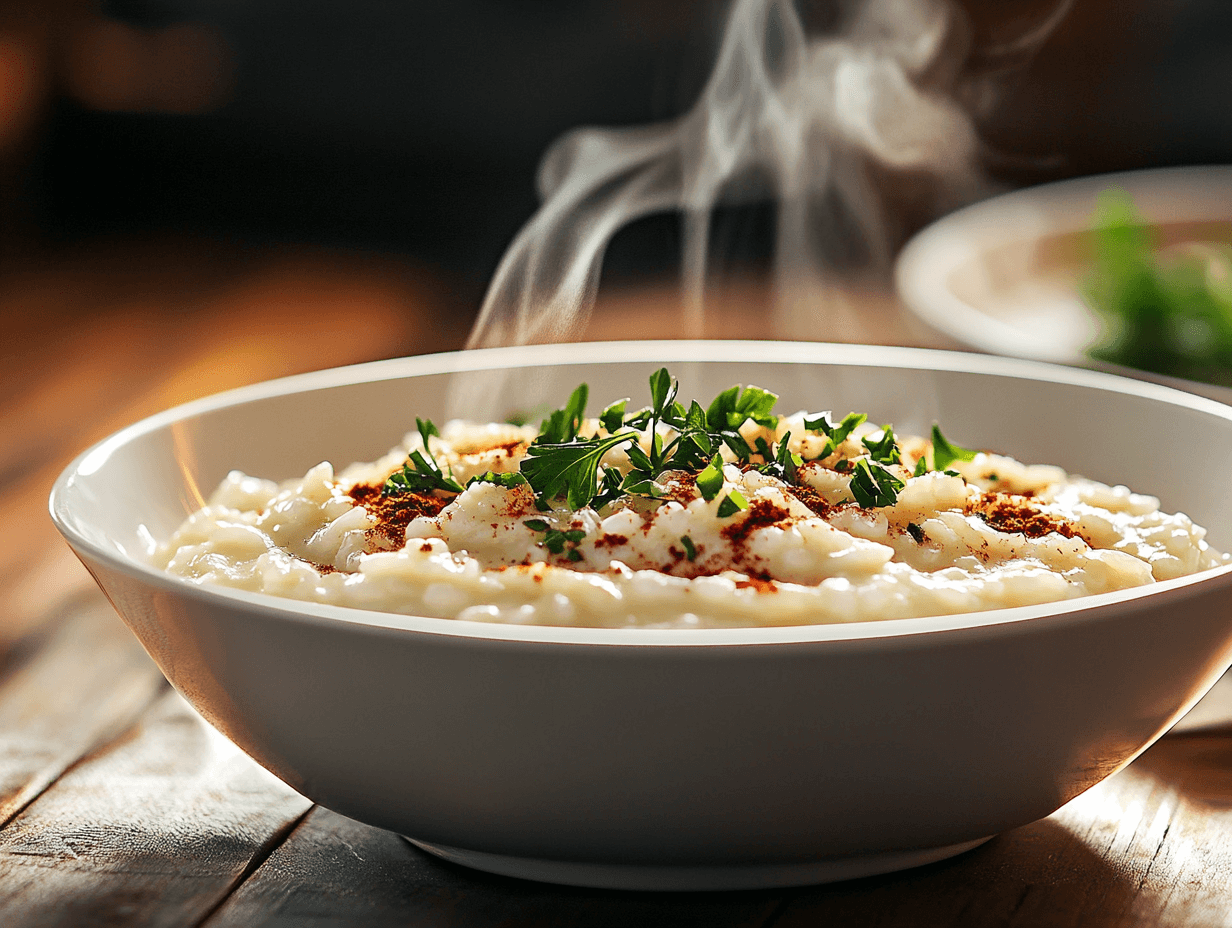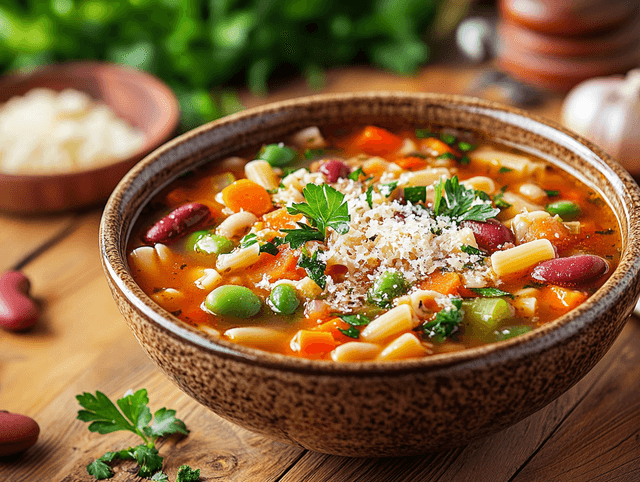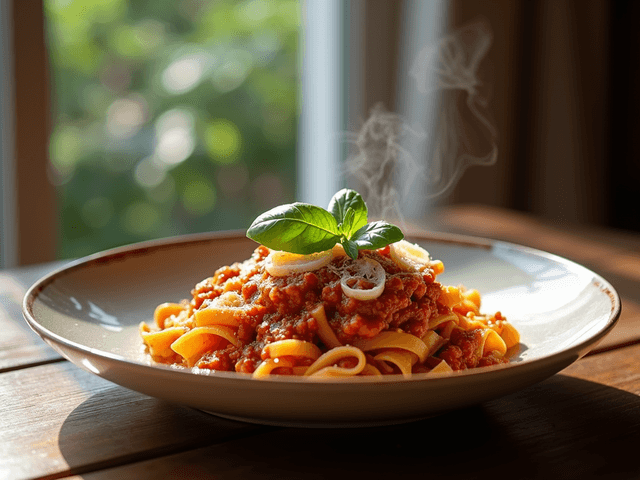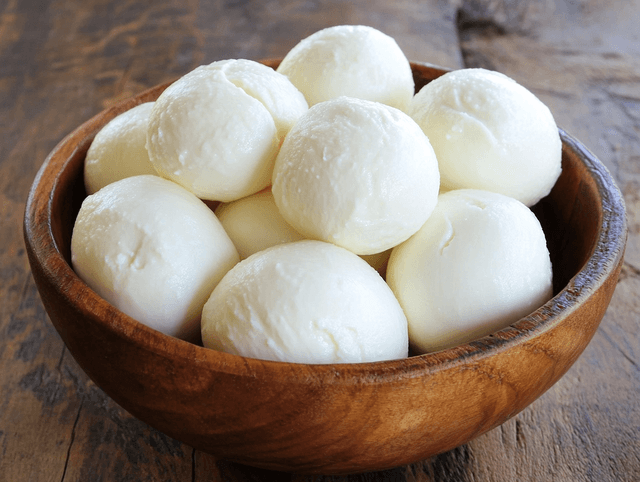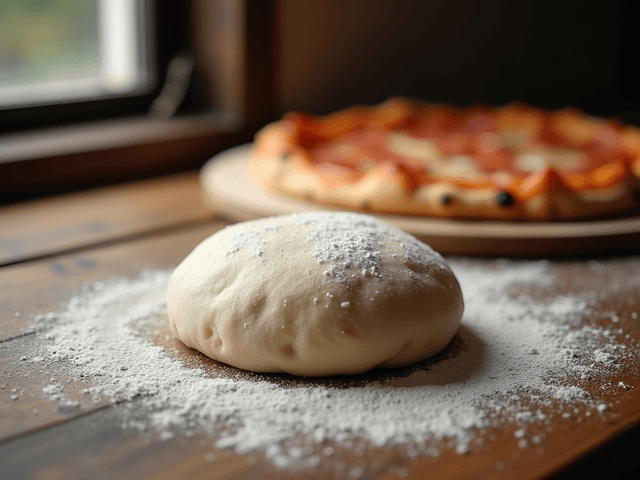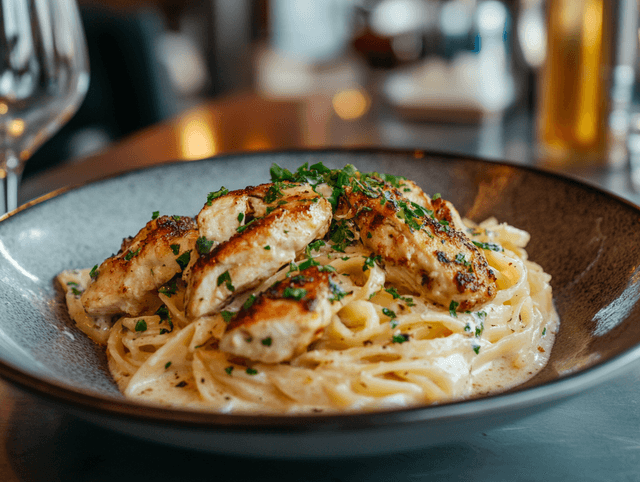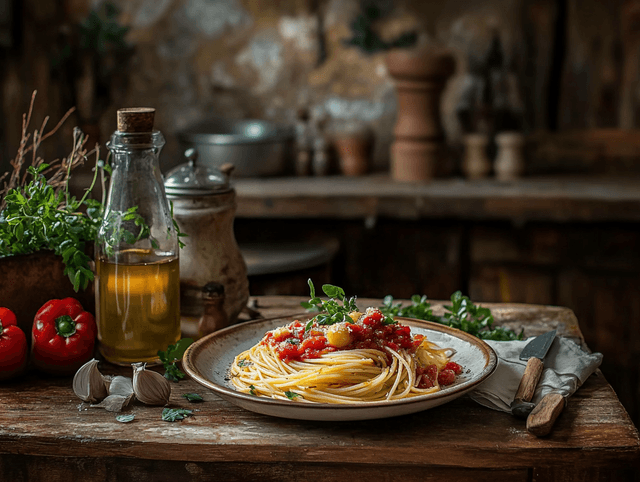What is the best rice for risotto?
Risotto requires specific types of rice with particular characteristics to achieve its signature creamy texture. Here are the most recommended varieties:
Main Varieties
Carnaroli: Known as the "king of risotto," it's the preferred choice of professional chefs because:
- Its high starch content allows for more starch release during cooking, creating that characteristic silky texture.
- It maintains a firm al dente texture and is more resistant to overcooking than other varieties.
- Its cooking requires higher temperature and more time, but rewards with superior results.
Arborio: The most common and traditional variety:
- This premium rice originates from the farming fields of Italy's Piedmont region.
- Its specific amylose content gives it unique properties for risotto preparation.
- Its medium-sized, pearly grains are perfect for absorbing broth flavors.
- Notable for its extraordinary capacity to absorb liquids without losing structure.
Vialone Nano: A quality alternative:
- Its smaller size allows for more uniform and quicker cooking than Carnaroli.
- Perfect for lighter preparations and risottos with delicate ingredients.
- Produces a looser and more elegant texture in the final dish.
Essential Characteristics
The ideal rice for risotto must have:
- A high percentage of starch that releases gradually to create that distinctive creamy texture.
- The grain structure must be robust and compact to maintain its shape.
- Must be able to absorb up to three times its weight in liquid without disintegrating.
- Maintain its integrity even after constant stirring during cooking.
Accessible Alternatives
If you can't find Italian varieties, you can use:
- Spanish Bomba rice offers similar results in texture and creaminess.
- Quality round-grain rice can be a viable and accessible option.
- Calasparra rice, although less common, is highly valued by experts for its absorption capacity and final result.
Avoid basmati rice, as its low starch content and elongated structure won't produce risotto's characteristic creamy texture.

Why is it important not to wash risotto rice?
Not washing risotto rice is a fundamental rule with important scientific and technical foundations. Understanding this practice will help us achieve the perfect risotto.
Main Reasons
Starch is crucial:
- The surface starch of the rice is responsible for creating the characteristic creamy and silky texture of risotto.
- During cooking, this starch releases gradually, acting as a natural thickening agent.
- Washing the rice would eliminate this valuable component that gives the perfect consistency.
Effect on texture:
- The external starch layer helps the grains bind smoothly together.
- It allows the rice to better absorb the flavors of the broth and other ingredients.
- It contributes to forming the typical velvety consistency of the dish.
Cooking process:
- The unwashed starch actively participates in the "mantecato" technique.
- It helps the rice release its starch in a controlled manner during cooking.
- It facilitates the integration of final ingredients like butter and cheese.
Additional benefits:
- Maintains grain integrity during constant cooking.
- Allows the rice to better absorb the initial soffritto flavors.
- Contributes to achieving the characteristic "all'onda" (wave-like) texture of Italian risotto.
If the rice is visibly dirty, it can be cleaned very superficially with a dry cloth, but never wash it with water.

How to Calculate Perfect Liquid-to-Rice Ratios
The correct proportion between liquid and rice is fundamental to achieving a risotto with perfect texture. Here are the exact measurements according to the number of servings.
Basic Proportion Rule
- The standard ratio is 3 parts broth to 1 part rice.
- It's recommended to have extra broth prepared in case it's needed during cooking.
Measurements by Number of Servings
For one person:
- 70-80 grams of rice
- 240 ml of broth
For two people:
- 140-160 grams of rice
- 480 ml of broth (approximately 2¼ cups)
For four people:
- 320 grams of rice (1½ cups)
- 1 liter of broth (4½ cups)
For six people:
- 480 grams of rice (2½ cups)
- 1.5 liters of broth (7½ cups)
Important Considerations
- Keeping the broth at a constant temperature is crucial for the rice to cook uniformly and absorb the liquid correctly.
- Preparing 20-25% extra broth ensures you won't run out of liquid during risotto preparation.
- Cooking should be maintained at medium-low heat throughout the process to achieve the perfect texture.
- The proportion rule remains constant regardless of the type of broth you choose for your recipe.
These proportions are a basic guide. You might need to adjust the amount of liquid depending on the specific type of rice and desired consistency of the final risotto.

The Secrets to Achieving Perfect Traditional Risotto Texture
Perfect risotto texture is one of the most important aspects of this Italian dish. Here are the fundamental secrets to achieving it:
The "All'onda" Technique
- The risotto's wave-like movement should be smooth and fluid, similar to how lava moves, indicating the dish's perfect consistency.
- The technique involves gently moving the pot or pan in circular motions to create that characteristic wave effect.
- To achieve this texture, the risotto must maintain a balance between creaminess and fluidity, without becoming a compact mass.
The Mantecatura Process
- Mantecatura is the crucial final step where elements that will give the characteristic silky texture are incorporated.
- This process requires adding cold butter cubes and grated parmesan, stirring vigorously off the heat for 2-3 minutes.
- The vigorous stirring in this final stage allows the ingredients to integrate perfectly, creating a creamy emulsion.
Temperature Control
- The heat must be maintained at medium-low, allowing the broth to be gradually absorbed over 18-20 minutes.
- If you notice the rice isn't absorbing liquid correctly, it's a sign that the temperature needs adjusting.
- Too intense boiling can result in rice that's undercooked in the center but pasty on the outside.
Perfect Cooking Point
- The grain should maintain a slight resistance when bitten, similar to al dente pasta, after 18-20 minutes of cooking.
- Perfect cooking is achieved when the center of the grain maintains a slight firmness without being raw.
- Total cooking time should not exceed 20 minutes to prevent the rice from overcooking and losing its ideal texture.
Final Consistency
- When serving, the risotto should spread smoothly on the plate, maintaining its shape without becoming watery.
- The ideal consistency is when the risotto "moves" on the plate but maintains its creamy structure.
- It's crucial to serve immediately on pre-heated plates to maintain the perfect texture for longer.

Necessary Ingredients
To prepare a traditional Italian risotto, it's essential to have high-quality ingredients that will help us achieve that characteristic creamy texture and flavor.
- Arborio or Carnaroli rice: 320g (serves 4) - Short-grain varieties with high starch content that give the characteristic creamy texture.
- Hot broth: 1 liter - Can be chicken, meat, fish, or vegetable, depending on the type of risotto. For traditional risotto, chicken or vegetable broth is recommended, and it must be kept hot throughout the preparation.
- White onion: 1 medium, finely chopped - Forms the aromatic base and adds natural sweetness to the dish.
- Dry white wine: 120ml - Adds acidity and depth of flavor while helping to open up the grain.
- Unsalted butter: 60g divided - Half for the initial soffritto and half for the final mantecatura.
- Olive oil: 2 tablespoons - For the initial soffritto and to prevent the butter from burning.
- Parmesan cheese: 80g freshly grated - Adds umami flavor and helps achieve the final creamy texture.
- Salt: To taste - Enhances all flavors and aids in proper rice cooking.
- White pepper: To taste - Adds a subtle spicy touch without altering the dish's color.
- Garlic: 2 cloves, finely chopped - Aromatic base that complements the onion.

How to Make an Authentic Risotto Step by Step
The preparation of an authentic Italian risotto requires attention to detail and patience. This traditional method will help us achieve the characteristic creamy texture of the dish.
Step 1: Initial Preparation
- Keep the broth hot (1 liter) in a separate pot over low heat, this is crucial to avoid interrupting the rice cooking process when adding it.
- Finely chop the onion (1 medium) and garlic cloves (2), creating a uniform aromatic base that will distribute throughout the dish.
- Have all ingredients measured and ready, including unwashed Arborio rice (320g) to maintain its natural starch.
Step 2: The Soffritto
- Heat a large pan over medium heat, add olive oil (2 tablespoons) and the first half of the butter (30g).
- Add the chopped onion and garlic, cooking gently until translucent but not browned, approximately 5 minutes.
Step 3: Toasting the Rice
- Add the rice to the soffritto and stir constantly for 2-3 minutes until the grains are pearly and hot.
- This step is crucial for the rice to gradually release its starch during cooking and better absorb the flavors.
Step 4: Adding the Wine
- Pour in the dry white wine (120ml) and stir constantly until it has almost completely evaporated.
- The alcohol should evaporate while leaving its flavor, this takes approximately 2 minutes.
Step 5: Cooking Process
- Begin adding hot broth, one ladle at a time (approximately 120ml per ladle), waiting for it to be absorbed before adding more.
- Maintain a gentle and constant simmer, stirring frequently to develop creaminess, for approximately 18 minutes.
- Add salt to taste and white pepper halfway through cooking to allow flavors to integrate well.
Step 6: Final Point and Mantecatura
- When the rice is al dente, remove from heat and add the remaining cold butter (30g) and grated parmesan (80g).
- Stir vigorously to create the characteristic creamy emulsion, this process is called mantecatura.
Step 7: Resting and Serving
- Let the risotto rest covered for 2 minutes to allow the flavors to perfectly integrate.
- Serve immediately on hot plates, the risotto should spread smoothly creating the "all'onda" effect.
A perfect risotto should have a creamy but not thick consistency, with rice grains cooked al dente and a texture that flows smoothly on the plate. The key lies in patience, constant movement, and respect for cooking times.

Ideas for Serving a Delicious Risotto
Plating and accompaniments are fundamental to elevating the experience of a good risotto. Here are the best options for serving it.
Classic Presentations
- Serve in a pre-heated deep plate to maintain the ideal temperature, allowing the risotto to spread naturally creating the "all'onda" effect.
- Finish with finely chopped fresh herbs and a generous layer of freshly grated parmesan cheese to enhance the flavors.
- Present in a crown shape with a hollow center, perfect for special sauces or garnishes that complement the dish.
Recommended Accompaniments
Vegetables:
- A fresh arugula salad with balsamic vinaigrette or a traditional caprese that adds freshness and contrast to the risotto's creaminess.
- Roasted or sautéed Mediterranean vegetables, highlighting green asparagus and a variety of sautéed wild mushrooms.
- Candied cherry tomatoes with Provençal herbs and a touch of extra virgin olive oil.
Proteins:
- A selection of fresh seafood such as sautéed prawns, garlic shrimp, or golden scallops that add marine flavor.
- Golden grilled chicken breast with aromatic herbs and a touch of lemon.
- Authentic Italian sausages roasted with fennel and Mediterranean spices.
Serving Complements
- Crispy artisanal bread or toasted baguette accompanied by aromatic butter with fresh herbs.
- A well-selected glass of wine, choosing a creamy Chardonnay or an elegant Pinot Noir for mushroom risottos.
- Light green salad with citrus vinaigrette to cleanse the palate between bites.

How to Properly Store and Reheat Risotto
Proper storage and reheating of risotto is essential to maintain its characteristic texture and flavor.
Proper Storage
- Before refrigerating, allow the risotto to cool completely at room temperature for no more than 2 hours to prevent bacterial growth.
- Store the risotto in airtight plastic containers with secure seals, avoiding metal or glass containers that can alter the dish's flavor and texture.
- Keep in the refrigerator at a constant temperature of 4°C (40°F) for a maximum of 3-5 days, ensuring the container is well sealed.
- For long-term storage, freeze at -18°C (0°F) for up to 2 months in special freezer bags, removing as much air as possible.
Reheating Methods
On the Stove (Recommended Method):
- Transfer the risotto to a non-stick pot or pan with a lid, ensuring even heat distribution.
- For each cup of risotto, add 2-3 tablespoons of hot broth or water to restore the original creaminess.
- Keep at medium-low heat for 4-5 minutes, stirring gently every minute to prevent sticking.
In the Microwave:
- Distribute the risotto evenly in a microwave-safe container, adding 2-3 tablespoons of liquid per serving.
- Partially cover the container and heat at medium power for 3-4 minutes, stirring halfway through.
- In the last minute, add a tablespoon of butter to restore creaminess.
In a Pan:
- Heat a non-stick pan with a tablespoon of butter until completely melted.
- Add the risotto along with 2-3 tablespoons of hot broth per serving, mixing gently.
- Maintain at medium-low heat for 4-5 minutes, stirring constantly to achieve a uniform texture.
Important Tips
- Thaw the risotto in the refrigerator overnight and only reheat the amount you plan to consume.
- Avoid reheating the same risotto more than once to maintain food safety and quality.
- Ensure the risotto reaches an internal temperature of at least 74°C (165°F) during reheating.
- If you notice the texture is too dry, gradually add small amounts of hot broth while reheating.

Frequently Asked Questions (FAQs)
Q: Why must the broth be hot?
A: Hot broth helps the rice release more starch during cooking, prevents interruption of the cooking process, and allows the grain to maintain a constant temperature to achieve perfect texture.
Q: How long exactly should I stir the risotto?
A: Total cooking time should be 18-20 minutes from when you start adding the broth. Constant stirring isn't necessary - just stir each time you add liquid to prevent sticking.
Q: How do I know when the risotto is done?
A: The risotto is ready when the grain is al dente (with slight resistance when biting), the consistency is creamy but not thick, and when you move the plate the risotto flows like a wave.
Q: Can risotto be reheated?
A: Yes, it can be reheated by adding some hot broth or water in a pan over medium heat, stirring gently until it recovers its temperature and creaminess, but it should only be reheated once.
